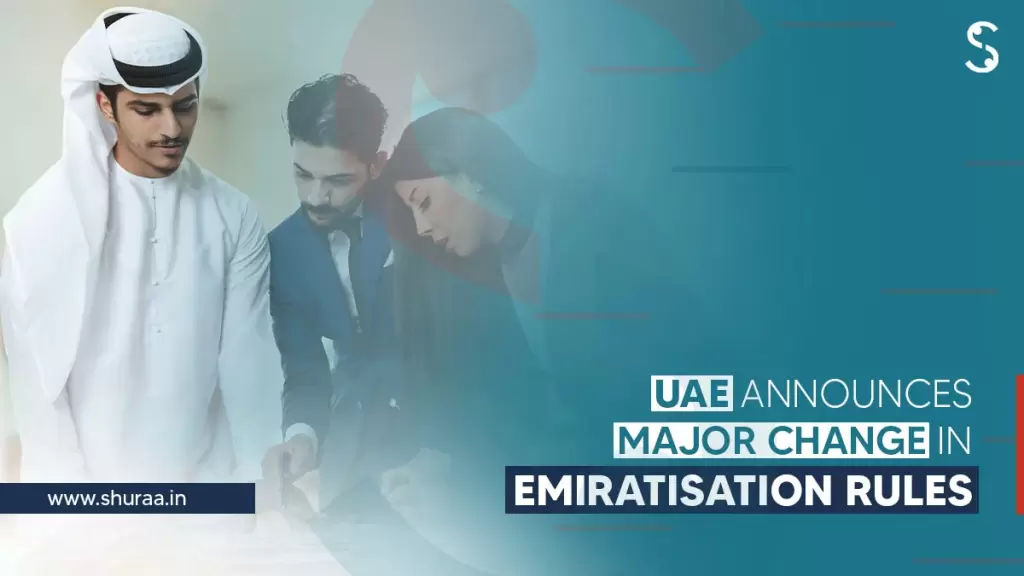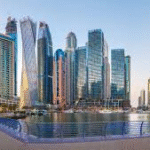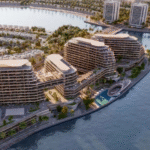Now Reading: Dubai Real Estate: 7 Smart Uses of Corporate Tax Credits in 2025
-
01
Dubai Real Estate: 7 Smart Uses of Corporate Tax Credits in 2025
Dubai Real Estate: 7 Smart Uses of Corporate Tax Credits in 2025

Table of Contents
Smart Uses of Corporate Tax: Dubai’s real estate market, part of the UAE’s USD 103 billion sector in 2024, is projected to grow at an 8.5% CAGR to USD 221 billion by 2030, per Statista. With 140,000 transactions worth AED 460 billion ($125 billion) in 2024, per Dubai Land Department (DLD), the market offers 5–7% rental yields. The UAE’s 9% Corporate Tax (CT), effective since June 2023 under Federal Decree-Law No. 47, per Federal Tax Authority (FTA), includes credits like foreign tax credits and loss carryforwards. This article outlines seven strategies for leveraging CT credits in Dubai real estate in 2025, with U.S. tax considerations, without external links.
Why Corporate Tax Credits Matter?
Dubai’s 4.3% GDP growth forecast, 3.6 million population, and 25% FDI growth to AED 12 billion ($3.3 billion) in 2024 drive demand, per Dubai Economy and Tourism. CT credits reduce costs by 0.5–2%, enhancing 6–8% yields. Key impacts:
- Tax Savings: 0.5–1% cost reduction via credits.
- Compliance Efficiency: 98% adherence; fines up to AED 1 million avoided.
- Yield Stability: 85–90% occupancy in Downtown Dubai.
- FDI Appeal: 20% growth in real estate investments.
7 Smart Uses of Corporate Tax Credits in 2025
1. Offset Foreign Taxes on Dubai Marina Income
Foreign tax credits (FTCs) offset UAE’s 9% CT against foreign taxes paid on UAE-sourced income, per FTA. A AED 5 million Dubai Marina rental portfolio taxed at 5% abroad ($6,800) claims FTCs, reducing UAE CT by AED 25,000 ($6,800).
- Impact: Saves 1–1.5% in taxes; supports 6–7% yields.
- U.S. Consideration: FTCs on IRS Form 1116; rentals on Schedule E.
- Action: File via FTA portal; invest in Emaar’s properties.
2. Utilize Loss Carryforwards for Jumeirah Developments
Indefinite loss carryforwards offset up to 55% of taxable income, per FTA. A AED 10 million Jumeirah project with AED 3 million losses in 2024 reduces 2025 CT by AED 270,000 ($73,600), saving 0.5–1%.
- Impact: Enhances ROI by 0.5–1%; stabilizes 6–8% yields.
- U.S. Consideration: Losses on Schedule E; depreciation on Form 4562.
- Action: Track via Emirates NBD; target Nakheel’s projects.
3. Leverage Group Taxation for Downtown Portfolios
UAE-resident companies with 95% common ownership file as a single tax entity, offsetting losses, per FTA. A AED 100 million Downtown Dubai portfolio with one loss-making entity saves AED 900,000 ($245,000) in CT.
- Impact: Cuts tax by 0.5–1%; boosts 85% occupancy.
- U.S. Consideration: Income on Schedule E; accounts on FinCEN Form 114.
- Action: Apply via FTA; consult PwC for structuring.
4. Claim R&D Credits for Smart Building Tech
Upcoming R&D tax credits (30–50% from 2026) apply to AI-driven PropTech in Dubai Silicon Oasis, per FTA. A AED 5 million smart building project claims AED 1.5 million credits, reducing CT by AED 135,000 ($36,700).
- Impact: Saves 0.5–1%; aligns with 6–8% yields.
- U.S. Consideration: R&D credits on Form 6765; assets on Form 8938.
- Action: Partner with DEWA; file via FTA.
5. Restructure Intra-Group Transfers for Business Bay

Tax-free intra-group asset transfers within a 75% commonly owned group defer CT, per FTA. A AED 50 million Business Bay transfer saves AED 450,000 ($122,500) in CT, with a two-year clawback.
- Impact: Defers tax by 0.5–1%; supports 7–8% yields.
- U.S. Consideration: Gains on Form 8824; income on Schedule E.
- Action: Register with DLD; consult Deloitte.
6. Optimize Free Zone Benefits for Dubai South
Qualifying Free Zone Persons (QFZPs) in Dubai South enjoy 0% CT on qualifying income, per FTA. A AED 20 million commercial project saves AED 1.8 million ($490,000) in CT, maintaining substance requirements.
- Impact: Reduces tax by 1–2%; boosts 6–7% yields.
- U.S. Consideration: Income on Schedule E; report on Form 1040.
- Action: Set up via DMCC; verify with FTA.
7. Exempt REIT Income in DIFC
Real Estate Investment Trusts (REITs) in DIFC meeting QIF criteria are CT-exempt, per FTA. A AED 30 million Palm Jumeirah REIT portfolio avoids AED 2.7 million ($735,000) in CT, saving 1–1.5%.
- Impact: Enhances ROI by 0.5–1%; stabilizes 85% occupancy.
- U.S. Consideration: Dividends on Schedule B; assets on Form 8938.
- Action: Structure via DIFC; consult Savills.
Key Considerations for U.S. Investors
- Risks:
- Oversupply: 60,000 units in 2025 may soften yields by 0.5–1%, per Cushman & Wakefield.
- Volatility: 5–8% price fluctuations possible, per CBRE.
- Compliance Costs: Advisory fees add 0.3–0.5%, offset by savings.
- Tax Compliance: UAE’s 9% CT and 5% VAT apply. IRS requires Form 1040, Form 1116, Form 8938, Form 8824, Form 4562, and FinCEN Form 114.
- Regulatory Compliance: DLD mandates KYC; fines up to AED 1 million. Verify via RERA.
- Currency Stability: AED pegged at 1 USD = 3.67 minimizes risk.
Conclusion
Dubai’s 2025 CT credit strategies—foreign tax offsets, loss carryforwards, group taxation, R&D credits, intra-group transfers, free zone benefits, and REIT exemptions—optimize a $125 billion real estate market with 6–8% yields. U.S. investors, leveraging IRS credits and tools from FTA, DLD, or DIFC, can maximize returns in Dubai Marina, Downtown, and Dubai South, ensuring compliance and robust profits in UAE’s dynamic real estate landscape. corporate tax
read more: 5 Strategic Insights Into Emiratisation Tax Penalties in 2025






















